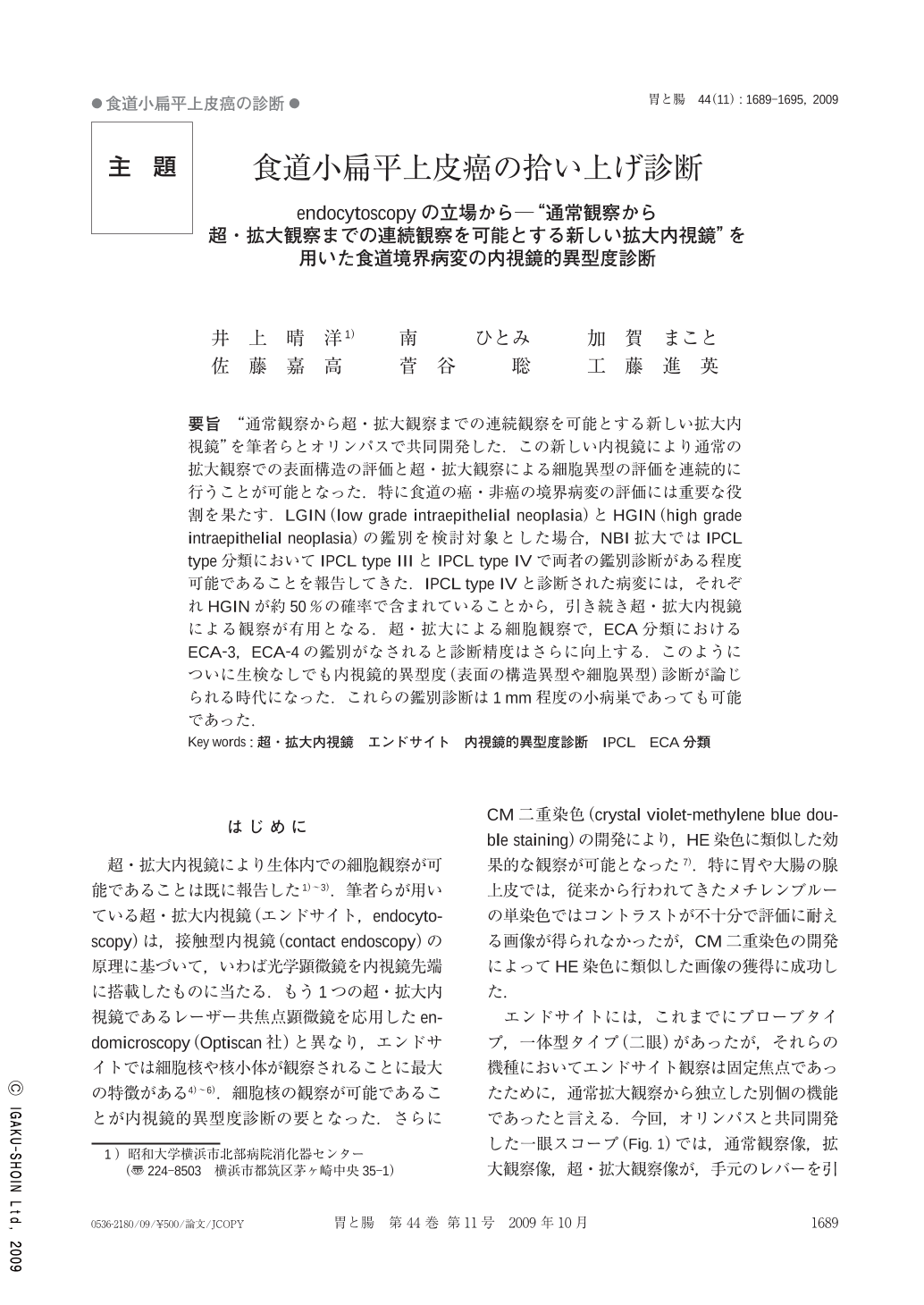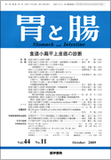Japanese
English
- 有料閲覧
- Abstract 文献概要
- 1ページ目 Look Inside
- 参考文献 Reference
要旨 “通常観察から超・拡大観察までの連続観察を可能とする新しい拡大内視鏡”を筆者らとオリンパスで共同開発した.この新しい内視鏡により通常の拡大観察での表面構造の評価と超・拡大観察による細胞異型の評価を連続的に行うことが可能となった.特に食道の癌・非癌の境界病変の評価には重要な役割を果たす.LGIN(low grade intraepithelial neoplasia)とHGIN(high grade intraepithelial neoplasia)の鑑別を検討対象とした場合,NBI拡大ではIPCL type分類においてIPCL type IIIとIPCL type IVで両者の鑑別診断がある程度可能であることを報告してきた.IPCL type IVと診断された病変には,それぞれHGINが約50%の確率で含まれていることから,引き続き超・拡大内視鏡による観察が有用となる.超・拡大による細胞観察で,ECA分類におけるECA-3,ECA-4の鑑別がなされると診断精度はさらに向上する.このようについに生検なしでも内視鏡的異型度(表面の構造異型や細胞異型)診断が論じられる時代になった.これらの鑑別診断は1mm程度の小病巣であっても可能であった.
Single-lens ultra-high magnifying endoscopy which allows continuous observation from the regular endoscopic image to ultra-high magnification image was newly developed by cooperation between Olympus and the authors. By regular endoscopy, a lesion is identified as a brownish area using NBI image enhancement. Standard magnifying view enables the observer to demonstrate the IPCL pattern of the lesion. In a reported case the lesion was identified as IPCL type IV, which arouses suspicion of high grade intraepithelial neoplasia. The ultrahigh magnifying view(endocytoscopy)revealed ECA-3 which often corresponds to low grade intraepithelial neoplasia. Histological diagnosis for the resected specimen was low grade intraepithelial neoplasia. Its image is similar to the endocytoscopic image. As in this case, the newly designed ultra-high magnifying endoscopy enables endoscopic evaluation of tissue atypia by evaluating both structural atypia and cellular atypia.

Copyright © 2009, Igaku-Shoin Ltd. All rights reserved.


